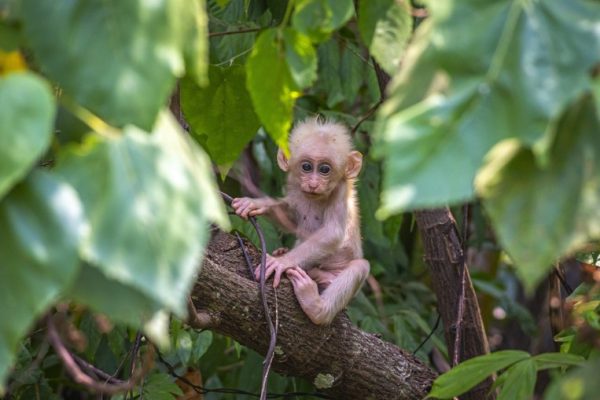
China Reports First Human Infection And Death By Monkey B Virus
Last week China reported the first human infection and death caused by BV virus also called ‘Monkey B Virus’.
Other names for the Monkey B Virus are herpes B, monkey B virus, Herpesvirus simiae, and herpesvirus B.
According to the media reports, a 53-year-old vet, who worked with non-human primates in an institution, had dissected two dead monkeys in March. In April, the deceased had shown early-onset symptoms, including vomiting and nausea.
This news created panic and rage because the current Covid-19 pandemic that is not over and not slowed down yet.
Local media reported that this was China’s first recorded human infection of the Monkey B virus. The virus was identified first in 1932 and infected only 50 people till 2020. Of these, 21 people died.
The first indications of B virus infection are typically flu-like symptoms:
- fever and chills
- muscle ache
- fatigue
- headache
Those who get infected by monkey might develop small blisters in the wound or area on your body that had contact with the monkey. Symptoms typically start within one month of being exposed to a monkey with B virus infection, but could appear within three to seven days.
Some other symptoms which may appear in rare cases are:
- Difficulty breathing
- Nausea
- Stomach ache
- Hiccups
According to CDC, Macaque monkeys very commonly carry these viruses and can be found in Macaque monkeys feces, saliva, urine, or spinal cord or brain tissue. Viruses can survive on the surfaces for many hours and especially on moist surfaces. When monkey scratches or bites humans, virus from the infected monkey gets into system through skin, eyes, nose, or mouth. Similarly, any exposure to an infected monkey’s brain, spinal cord or skull can transfer virus to humans.
Symptoms usually appear within a month of the exposure, but could also occur within three to seven days. Initially flu -like symptoms -including fever and chills, fatigue, muscle ache, and headache are usually the first signs of the infections. These symptoms are followed by small blisters in the area on the body or the wound that came in contact with the monkey. Other symptoms include shortness of breath, vomiting and nausea, hiccups, and abdominal pain.
As the infection spreads, inflammation of the spinal cord and brain, leading to inflammatory and neurologic symptoms. The infected person may also face problems with muscle coordination. The virus is also known to cause damage to the brain and the nervous system, and in extreme cases, death.
If anyone exposed to a macaque monkey by bites or other means, they must begin first aid immediately.
- First, thoroughly wash and gently scrub the wound or area on your body that had contact with the monkey with soap, detergent, or iodine for 15 minutes.
- After, run water over the wound or area for 15 to 20 minutes more.
- Then, immediately see a healthcare provider for treatment. Tell the healthcare provider that you have been exposed to a macaque monkey that may be infected with B virus.
Treatment :
If your healthcare provider determines that you need treatment for B virus exposure or infection, you may be treated with antiviral medications. Timely first aid and treatment for high-risk exposures is thought to be crucial to preventing life-threatening disease.
There is no approved vaccine for the virus. Veterinarians and veterinary lab workers are at a higher risk and are encouraged to use protective equipment such as lab coats, gloves, and face shields.
References and for more read:
https://www.cdc.gov/herpesbvirus/firstaid-treatment.html
https://www.cdc.gov/herpesbvirus/index.html
Image credit: Image by Erik Karits from Pixabay (Free for commercial use)
Author: Sumana Rao | Posted on: July 21, 2021
« Concerned About Delta Variants? Here Are Answers CDC Warns About Infectious Rare Illness Melioidosis In United States »






















Write a comment